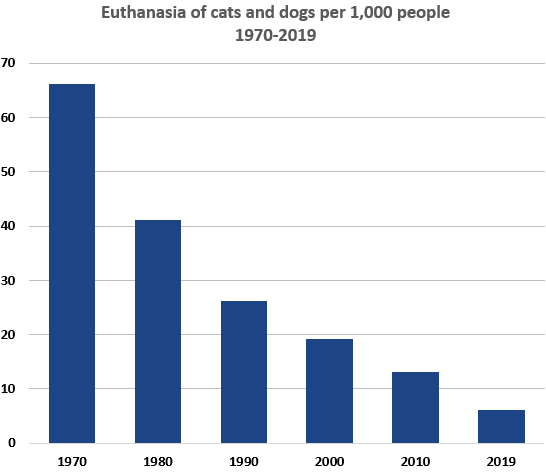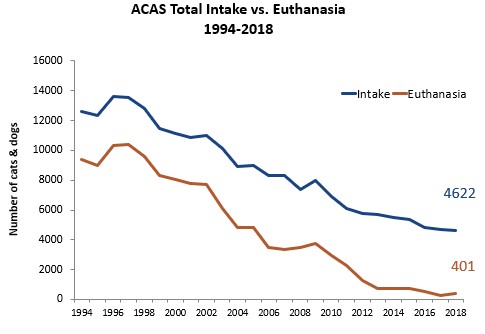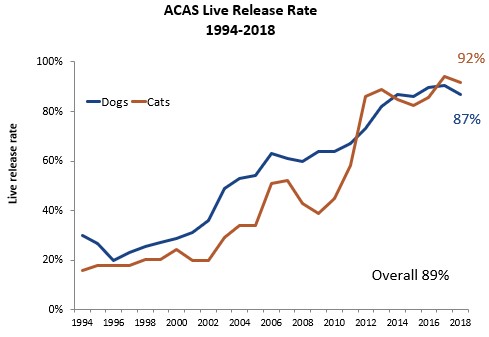Module 4: The Case of the Spay-Neuter Skeptic
The Relationship Between Spay-Neuter and Positive Outcomes
In the past 40 years, US shelters have experienced a dramatic decrease in euthanasia rates, primarily due to the impact of sterilization. While this is good news, a recent report estimated that 1.5 million pets are euthanized in US animal shelters every year. Mortality due to euthanasia in animal shelters is still a leading cause of death for dogs and cats.

Reduce Intake to Reduce Euthanasia
It is estimated that 6.5 million companion animals currently enter US shelters annually. Reuniting lost pets with owners, adoption, and transferring pets to other agencies with more room are important ways to save these pets. Even more important is preventing the need for sheltering in the first place. Controlling the birth of unwanted puppies and kittens and helping families keep their pets are two of the most effective methods for reducing shelter intake and subsequent unnecessary euthanasia.
In most shelters, the single largest driver of euthanasia is intake numbers. When the intake decreases, the euthanasia rate decreases in direct proportion. For example, in Gainesville’s Alachua County Animal Services municipal shelter, intake and euthanasia peaked in 1997. In response, a strong community coalition formed with a goal of eliminating euthanasia of healthy and treatable animals. The coalition opened a spay-neuter clinic, started a community cat trap-neuter-return program, implemented subsidized veterinary care for low-income pet owners, grew foster-based pet rescue organizations, and removed barriers to adoption. Even though the proportion of pets euthanized plunged from 77% to 11%, the relationship between intake and euthanasia remained constant year over year.



